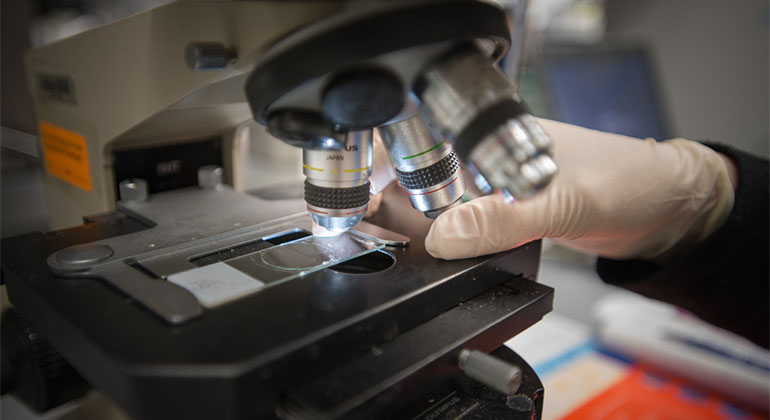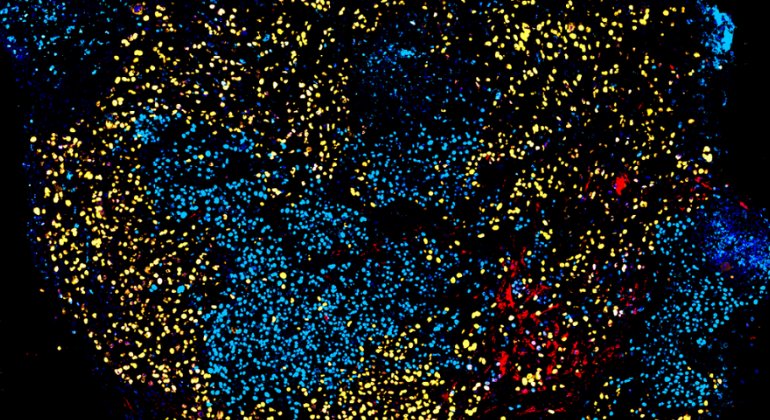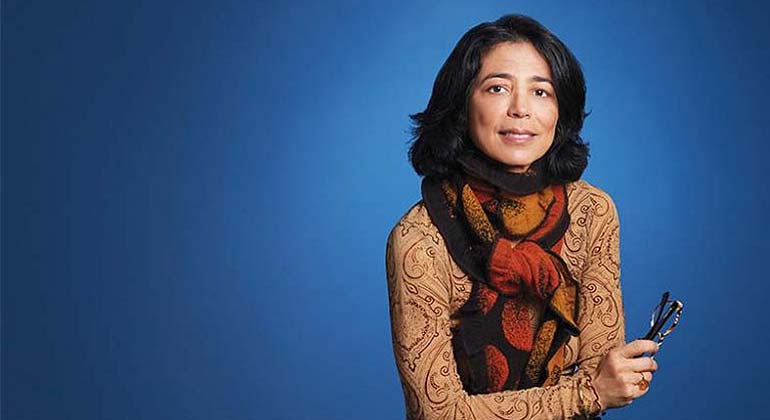Mount Sinai Researchers Develop Simple Method to Characterize Immune Cells in Tumors
Despite recent achievements in the development of cancer immunotherapies, only a small group of patients typically respond to them. Predictive markers of disease course and response to immunotherapy are urgently needed. To address this need, researchers at The Tisch Cancer Institute (TCI) at the Icahn School of Medicine at Mount Sinai have developed a new method of analyzing multiple tissue markers using only one slide of a tumor section to better understand immune response occurring locally. Named MICSSS, for multiplexed immunohistochemical consecutive staining on a single slide, the new technique helps characterize human cells involved in immune responses at the tissue site, before and after treatment with immunotherapy. The research, published today in the journal Science Immunology, may help define new biomarkers to predict patient outcome.
In cancer, having a measurable immune response at the tumor site has been associated with improved outcome of patients with various types of cancers. Recent studies have shown that tumor-infiltrating immune cells consist of different subtypes with distinct functions, and that their frequency, localization, and organization in cancer tissues end up either promoting antitumor immunity or, in some cases, preventing it; both of these eventually affect the patient’s outcome. However, a lack of methods to characterize the complex relationships between immune and cancer cells and the difficulty of obtaining enough tissue to do so with standard methods hampers the ability to study the mechanisms at play.
“Our goal was to get a better understanding of immunologic responses at the tumor site while addressing the need for high-dimensional analysis using as little tissue as possible,” said Sacha Gnjatic, PhD, Associate Professor of Immunology, Hematology, and Medical Oncology at TCI, who was the senior co-author of this study with Miriam Merad, MD, PhD, Professor of Oncological Sciences, Hematology, and Medical Oncology at TCI. “We need more comprehensive analyses of the immune microenvironment of tumors, as part of our immune monitoring to inform treatment and predict outcomes for cancer patients.”
Lead author Romain Remark, PhD, a postdoctoral fellow working in the laboratories of Dr. Gnjatic and Dr. Merad, helped develop a new method to look at multiple tissue markers and detect expression of biological markers with just one tissue section slide. Researchers applied the MICSSS technique to tumor tissue sections of melanoma and lung cancers. This enabled views of co-expression of markers on the same cells while sparing material from tissues.
“The MICSSS technique helps us characterize the distribution of complex cell subsets in tumor tissues without cross-reactivity between staining cycles,” said Dr. Remark. “In contrast to other available methods, our approach is not as reliant on proprietary reagents or instruments and should be easier to adapt because it follows the same staining steps currently implemented throughout all pathology labs.”
If the MICSSS method is proven successful in mapping other tumor types (hepatocellular carcinoma, colorectal, breast, head and neck, or pancreatic cancers), the investigators believe it may be useful beyond just cancer. It offers the ability to reuse any slide from a tissue sample, up to 10 times, and to characterize multiple parameters with standard chromogen staining. Researchers have begun to apply MICSSS to characterize immune and tissue markers of diabetes, HIV-related kidney pathology, inflammatory bowel disease, and atherosclerosis.
“We hope to implement MICSSS as part of the Human Immune Monitoring Center at TCI to characterize the types of immune cells infiltrating various cancers and other disease for their density, localization in the tissue, and diversity,” said Dr. Merad.
Collaborators included researchers from Memorial Sloan Kettering Cancer Center in New York, the University of Heidelberg in Germany, and the Paris Descartes University in France.
The researchers declare no conflicts of interest.
About the Mount Sinai Health System
Mount Sinai Health System is one of the largest academic medical systems in the New York metro area, employing 48,000 people across its hospitals and more than 400 outpatient practices, as well as more than 600 research and clinical labs, a school of nursing, and a leading school of medicine and graduate education. Mount Sinai advances health for all people, everywhere, by taking on the most complex health care challenges of our time—discovering and applying new scientific learning and knowledge; developing safer, more effective treatments; educating the next generation of medical leaders and innovators; and supporting local communities by delivering high-quality care to all who need it.
Through the integration of its hospitals, labs, and schools, Mount Sinai offers comprehensive health care solutions from birth through geriatrics, leveraging innovative approaches such as artificial intelligence and informatics while keeping patients’ medical and emotional needs at the center of all treatment. The Health System includes approximately 9,000 primary and specialty care physicians and 11 free-standing joint-venture centers throughout the five boroughs of New York City, Westchester, Long Island, and Florida. Hospitals within the System are consistently ranked by Newsweek’s® “The World’s Best Smart Hospitals, Best in State Hospitals, World Best Hospitals and Best Specialty Hospitals” and by U.S. News & World Report's® “Best Hospitals” and “Best Children’s Hospitals.” The Mount Sinai Hospital is on the U.S. News & World Report® “Best Hospitals” Honor Roll for 2024-2025.
For more information, visit https://www.mountsinai.org or find Mount Sinai on Facebook, Twitter and YouTube.
Researchers Discover Potential Boost to Immunotherapy
Mar 30, 2020 View All Press Releases

